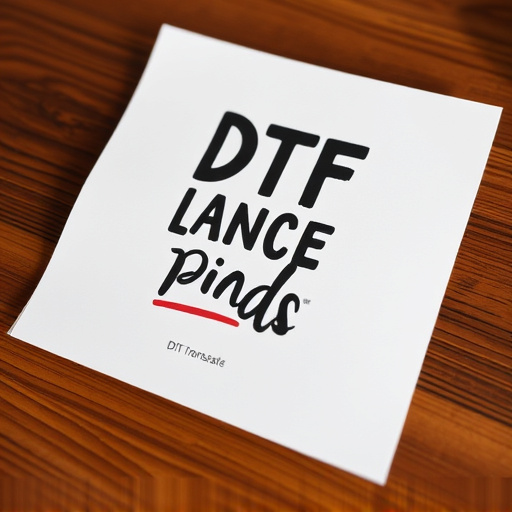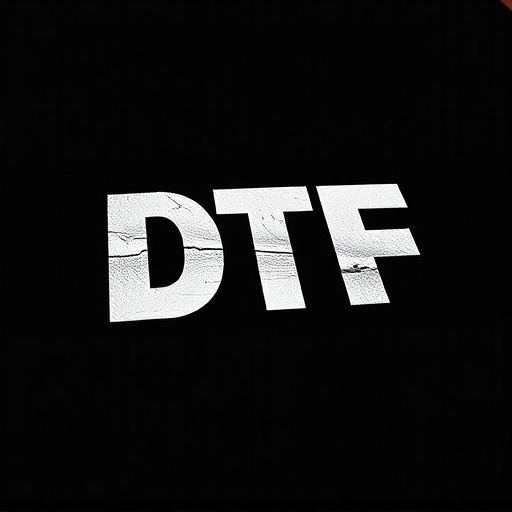Direct-to-Film (DTF) prints are revolutionizing art preservation by merging traditional artistry with modern technology. This process digitizes and transfers detailed illustrations onto film, creating one-of-a-kind, tactile masterpieces that capture every stroke and shade accurately. Gaining popularity among artists and collectors, DTF prints offer a nostalgic appeal while ensuring the longevity of artwork. They serve as a unique bridge between past artistic visions and present-day experiences, enhancing various mediums such as art installations and graphic design with vibrant, high-resolution images that maintain quality when scaled. Case studies demonstrate successful applications, including animating intricate hand-drawn works and reimagining vintage illustration books as fine art films, preserving historical content while offering unique viewing experiences in the digital era.
“Discover the captivating world of DTF Prints—a revolutionary art form that transforms detailed illustrations and designs into captivating film transfers. This unique preservation method combines traditional artistry with modern technology, offering endless creative possibilities. From understanding the fundamentals of DTF prints to exploring advanced techniques and their diverse applications, this comprehensive guide delves into the intricate process, essential materials, and inspiring case studies that highlight the transformative power of DTF as a dynamic medium in contemporary art and design.”
- Understanding DTF Prints: A Unique Form of Art Preservation
- The Process: From Illustration to Film Transfer
- Choosing the Right Materials for Optimal Results
- Techniques and Effects: Adding Depth and Dimension
- Applications: DTF Prints in Modern Art and Design
- Case Studies: Successful Transformations and Their Impact
Understanding DTF Prints: A Unique Form of Art Preservation
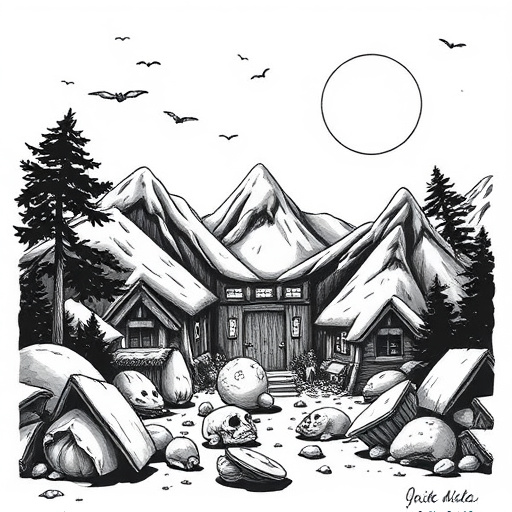
DTF (Direct-to-Film) prints represent a captivating intersection of traditional art and modern technology, offering a unique form of art preservation. This process involves transferring detailed illustrations and intricate designs directly onto film, creating a tangible record that captures every stroke and shade with remarkable accuracy. Unlike digital formats, DTF Prints provide a physical artifact, ensuring the artwork’s longevity and authenticity.
Each print is a one-of-a-kind masterpiece, as the transfer process allows for subtle imperfections and variations, adding character and depth to the final product. This approach has gained popularity among artists and collectors alike, who appreciate the tactile nature and nostalgic appeal of film transfers. DTF Prints serve as a bridge between the past and present, preserving artistic visions for future generations while offering a distinct aesthetic experience.
The Process: From Illustration to Film Transfer

The process of transforming detailed illustrations and designs into film transfers, often referred to as DTF (Direct to Film) Prints, involves several intricate steps. It begins with digitizing the original artwork, ensuring every stroke and detail is captured accurately in a digital format. This high-resolution digital file serves as the foundation for the entire process.
Once digitized, specialized software is utilized to prepare the image for transfer. This includes meticulous adjustments to color, contrast, and clarity to meet the desired aesthetic. After preparation, the digital file is ready for printing onto a chosen film stock. The film is then exposed using precision equipment, creating a negative that retains all the intricate details of the original illustration. Finally, this negative is used to make positive prints, resulting in vibrant and accurate DTF Prints that bring the artistic vision to life on a physical medium.
Choosing the Right Materials for Optimal Results
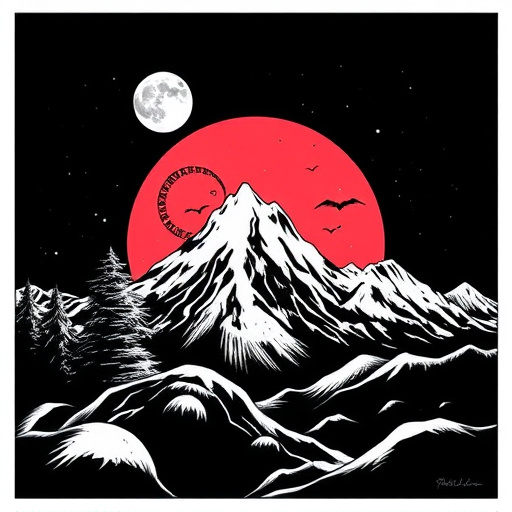
When it comes to transforming detailed illustrations and designs into film transfers, choosing the right materials is paramount for achieving optimal results. The process of creating DTF (Direct to Film) Prints requires a meticulous selection of both media and equipment to ensure the final product accurately represents the original artwork. High-quality paper or film stock, designed specifically for precision printing, forms the foundation of this endeavor. This material should offer excellent clarity, color accuracy, and resistance to fading, ensuring that intricate details are captured with minimal distortion.
Additionally, precise printing techniques and specialized inks play a crucial role in achieving lifelike representations. Modern DTF printing technologies enable the reproduction of fine lines, subtle gradients, and complex textures found in original illustrations. The use of archival-quality inks further safeguards against color shift over time, preserving the vibrancy and integrity of the design. By aligning these elements seamlessly, artists can produce film transfers that truly do justice to their creative visions.
Techniques and Effects: Adding Depth and Dimension

The process of transforming detailed illustrations and designs into film transfers, often referred to as DTF (Direct to Film) Prints, offers a unique way to add depth and dimension to visual art. Techniques such as layering and contrast adjustments allow artists to mimic the intricate details found in traditional illustrations while enhancing them with cinematic flair. By carefully controlling exposure and development, creators can produce prints that capture subtle textures, rich hues, and dramatic shadows, elevating the two-dimensional artwork into a three-dimensional experience.
Additionally, DTF Prints enable the integration of various effects like halftones, overprints, and special effects inks to further enhance the visual appeal. These techniques not only add depth but also create a sense of tactile quality, drawing viewers in and inviting them to explore the intricate details up close. The result is a captivating fusion of traditional art forms and modern printing technologies, offering collectors and enthusiasts a unique and immersive artistic experience.
Applications: DTF Prints in Modern Art and Design
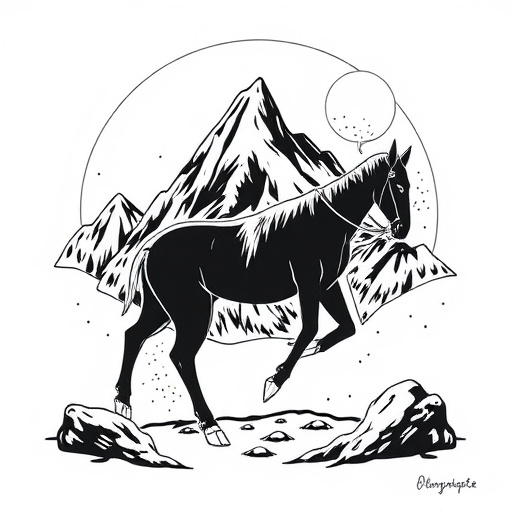
DTF (Direct-to-Film) prints have found a new life in modern art and design, offering a unique and visually striking approach to artistic expression. This technique involves transferring detailed illustrations and designs directly onto film, creating an immersive and nostalgic aesthetic that captures the essence of traditional printing methods. Artists and designers are embracing DTF Prints for their ability to produce high-resolution, vibrant images that can be scaled without losing quality, making them ideal for both fine art prints and graphic design projects.
In contemporary art installations, DTF Prints add a touch of retro charm, evoking feelings of nostalgia while also showcasing the artist’s technical prowess. They are particularly effective in creating immersive environments where viewers are enveloped by intricate patterns and vivid colors. Similarly, in graphic design, DTF technology enables the creation of eye-catching posters, book covers, and merchandise with complex designs that demand attention. The versatility of this process allows for endless creativity, making it a sought-after method for those seeking to produce visually captivating works that stand out in today’s digital landscape.
Case Studies: Successful Transformations and Their Impact

In the realm of visual storytelling, the transformation of detailed illustrations and designs into film transfers has proven to be a captivating process with significant impacts across various mediums. Case studies of successful transformations showcase the power of this technique in enhancing aesthetics and engaging audiences. For instance, artists have utilized DTF (Direct to Film) Prints to bring intricate hand-drawn animations to life, creating vibrant, bustling scenes that reverberate with viewers. In another notable case, a vintage illustration book was transformed into a series of fine art films, preserving the original artwork’s soul while also introducing it to new audiences through digital platforms.
These successful transformations not only preserve historical and artistic content but also open doors for creative expression in film, animation, and digital art. The impact is twofold: it ensures that delicate illustrations are conserved for future generations and simultaneously offers a unique viewing experience that stands out in today’s digital era. This process has fostered a deeper appreciation for the intricate details found in traditional art forms, revolutionizing how we consume and interact with visual storytelling.










